New bill hopes to codify Central Jersey
BY QUENTIN JIMENEZ, STAFF WRITERThe New Jersey Legislature has recently introduced a bill that would ofcially recognize one of the most controversial parts of the state, Central Jer sey. The bill would make Cen tral Jersey an ofcial part of the state’s tourism map, while also allocating funds to promote the region through advertise ments and marketing cam paigns. Lawmakers are hopeful that the bill would bring more meaning to the name Garden State by promoting “agritour ism” in the region, including “visits to farms, craft beverage makers, farm-to-table restau rants, farmers’ markets, and agriculturally themed festi vals.”
Andrew Zwicker, a State Senator and sponsor of the measure, believes that New Jersey tourism focuses too much on the waterfront, and should put more emphasis on the “quaint river towns and canal villages, scenic byways, harvest festivals, craft bever age makers, and Revolutionary War sites.” He hopes that an increase in tourism to the area will boost the state’s tourism
SDS Fall Production of Play On!
BY EVAN PAPAGEORGE, STAFF WRITERLast weekend, the Stevens Dramatic Society (SDS) put on their fall production: Play On! by Rick Abbot. There were four performances: one in the evening of Thursday and Friday, Saturday after
Dia de los Muertos tote bags hosted by DEI
 BY NICOLE GIARDINO, STAFF WRITER
BY NICOLE GIARDINO, STAFF WRITER
On November 1 and 2, the annual holiday Día de los Muertos, also known as The Day of the Dead, was celebrated. This is a Mex ican holiday where it is be lieved that the border be tween the spirit world and the everyday world opens. Because of this, families are able to welcome back the souls of their relatives who have since passed on, with a reunion that consists of food, refreshments, and celebration. Families create
ofrendas (oferings) to hon or and show respect to these family members.
This year on November 2, the Ofce of Diversity, Equity & Inclusion (DEI) and the Intercultural Space hosted an event to celebrate and recognize this holiday, where students could deco rate tote bags. Students were allotted to create whatever design they wished on their bags while also listening to light music, eating cookies, and drinking hot chocolate and cofee from Dunkin’. As stated by Liliana Delman,
noon, and the last Saturday night. The show included a cast of ten students, ranging from frst-years to graduate students, and a crew of stu dents, with two professionals as the stage manager and di rector.
The play follows a local community theater putting on a production. The show they are producing is Mur
der Most Foul, by a new play wright. Problems arise with the author continually re writing the plot, arguments, afairs between the players, a technical nightmare of a dress rehearsal, and a disas trous opening night. SDS’s crew put together a fantastic collection of modern outfts and Victorian evening wear, an early 20th-century style


Stevens Hindu YUVA throws Diwali celebration
BY CLAIRE HANNAN, NEWS EDITOROn October 28, 2022, the Hindu YUVA at Stevens (HYaS) threw a Diwali cele bration in the Gallery inside the University Center Com plex (UCC) South Tower. The event was successful, with about 50 attendees en joying prayer, games, and food throughout the night. HYaS, a student-led, reli gious organization for grad uate students, is open to all students of any background.
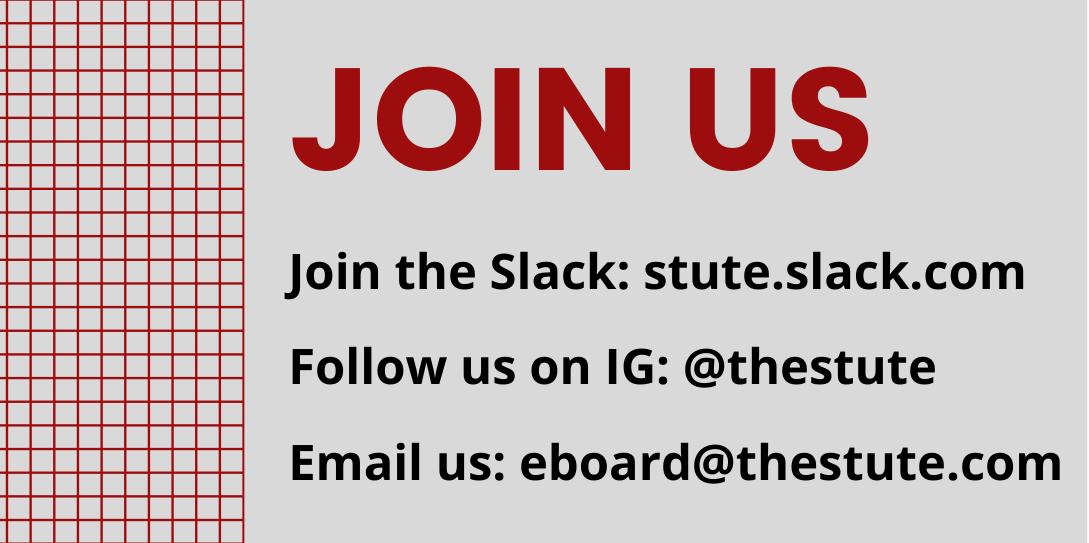
Diwali, also known as Deepavali is “the celebra tion of the return of Prabhu Shri Raam (seventh incar nation of Lord Vishnu) to Ayodhya (his kingdom). The people of Ayodhya cel ebrated the return […] by
lighting the streets with di yas (clay lamps with oil and cotton wicks) and bursting crackers.” Now to honor its origins, Diwali is celebrated with lights and frecrackers to show the victory of good over evil. The President and co-founder of HYaS, Sumedh Habbu, a graduate student studying Informa tion Systems, says the main problem facing the event was that, as a religious or ganization, HYaS does not receive any funding from the school. To compensate, they had to come up with creative solutions to supply the event such as having at tendees donate snacks and drinks. All monetary fund ing for the club comes from
www.thestute.com Instagram @thestute facebook.com/stevensthestute
manor parlor, and sound and light designs by Stevens students. The cast and crew have been working since the middle of September to put the show together.

The Stute had the oppor tunity to reach out to some of the cast and crew of the show to get their perspectives on the play. Luke Magette was the show’s Assistant Stage
Hoboken continues building food defenses
BY EVAN PAPAGEORGE, STAFF WRITERIn recent years, as climate change continues to negative ly impact many aspects of life, super-storms and fooding have become detrimental is sues for many low-lying and coastal areas. Specifcally, in Hoboken, fooding is a seri ous risk to property, infra structure, and human life. Hoboken has an average el evation of 23 feet above sea level. For reference, most of the Hudson River Waterfront Walkway would be underwa ter with surf reaching up to Washington Street in some areas.
With the increase in se verity and occurrence of su per storms like Irene, San dy, Isaias, and Ida, the city of Hoboken and the state of New Jersey is investing in in frastructure that can protect against storm surges. Sadly, another risk to Hoboken is the rising tides due to the polar ice caps melting. Under cur rent models, 50% of Hoboken
Manager and a student here at Stevens. He says, “It’s al ways such a moment of pride to share so many hours of work with an audience and to hear they’re receiving it well. Much like the play itself, the show built up to quite the explosive conclusion, and I wouldn’t have it any other
SDS PAGE 3
What’s the pay? NYC salary transparency law goes into efect
BY OZ AGUINAGA, NEWS EDITORCompanies of all kinds have closely guarded the prospective pay for their job opportunities for years, preventing employees from learning whether their co workers earn more money than they do and keeping applicants in the dark about possible earnings. But for New York City, one of the largest job markets in the world, that practice will no longer exist!


A new city law that went into efect at the start of No vember will require compa nies with at least four em ployees to post salary ranges for openings, even if the jobs involve remote or hybrid work.
According to the law, when a position is published on an internal job board, as well as external websites like LinkedIn, Indeed, or other job search platforms,
SCIENCE (6) How does AI shape our reality?
Read more about AI writing software and how it can be used in society.
FEATURE (4-5)
PULSE (12) Read answers from the Stevens community to our weekly Roving Reporter, plus solve our weekly cross word puzzle and sudoku
All opinions and editorials refect the views of their respective au thor(s). No Part of The Stute may be reproduced in any form, in whole or in part, without the written consent of the Editor-in-Chief. Cited refer ences of The Stute are permitted.
All members of the Stevens community are able to submit a Letter to the Editor to be published in The Stute. Letters must refer either to a piece published in The Stute or to The Stute in general and must be be tween 400 – 800 words in length. Submit letters to editor@thestute.com with your name and title (when applicable) or using our Google form. For writers who wish to write a Letter to the Editor anonymously, please see our policy on anonymity.

The Editorial Board reserves the right to choose whether or not to pub lish a submitted Letter to the Editor based on a majority rule vote, and additionally reserves the right to edit letters for clarity or request authors to revise. Provided that the author approves the fnal version, The Stute reserves the right to edit letters according to our copy editing procedures, defned in our policies.
All members of the Stevens community are able to submit a stand alone opinion piece (otherwise known as an Op-Ed) to be published in The Stute. Op-Eds must be between 400 – 800 words, but longer sub missions will be considered on a case-by-case basis. To submit an OpEd please email eboard@thestute.com with your name and title (when applicable) or using our Google form (tinyurl.com/submit-t0-stute). For writers who wish to write an Op-Ed anonymously, please see our policy on anonymity.
The Editorial Board reserves the right to choose whether or not to pub lish a submitted Op-Ed based on a majority rule vote, and additionally reserves the right to edit Op-Eds for clarity or request authors to revise. Provided that the author approves the fnal version, The Stute reserves the right to edit Op-Eds according to our copy editing procedures, de fned in our policies.
DEI
CONTINUED FROM PAGE 1


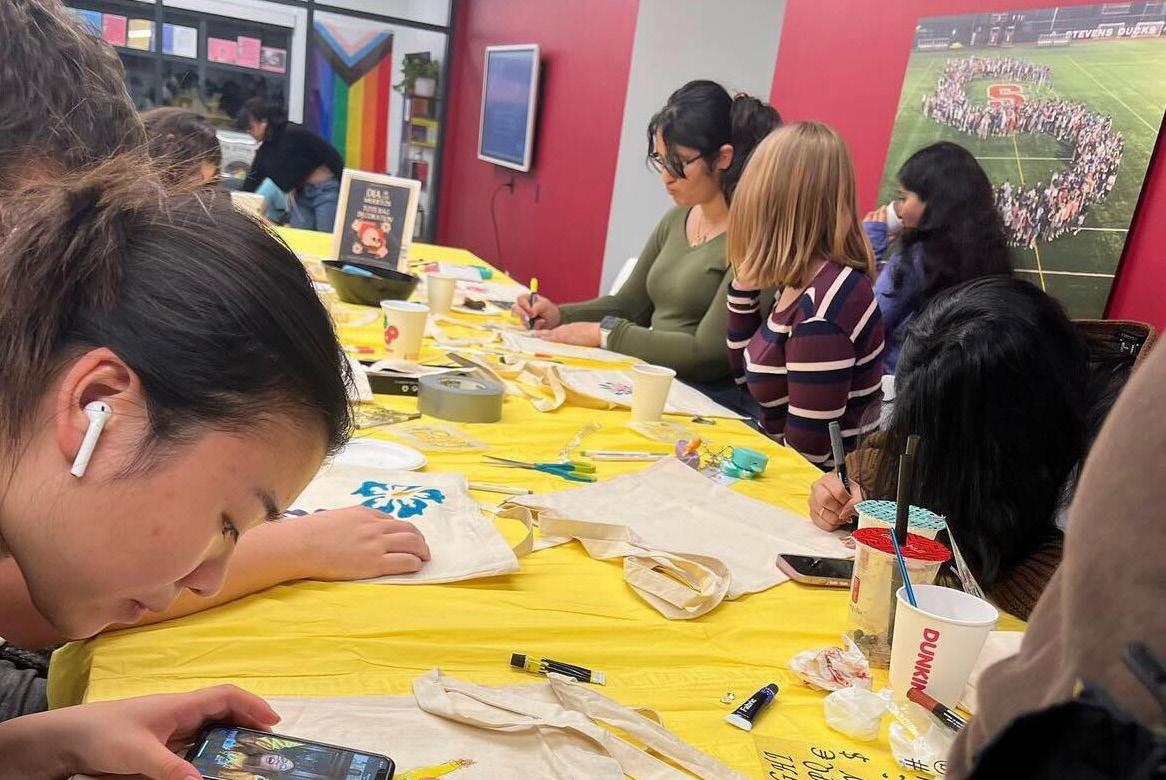
los Muertos tote bag decorating proved to be an informative, inter active, and fun way for students to learn more about this important holiday.
like

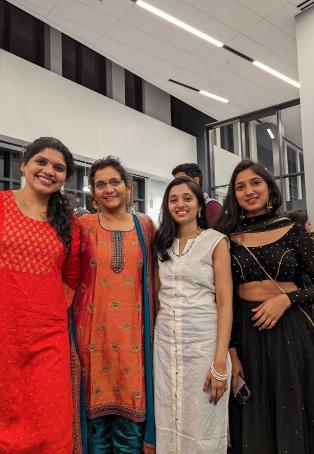

skull sten cils, paints, and markers to dec orate their tote bags, all students learned about this cultural tradi tion through an educational pre sentation.” This event took place on the second foor of the Uni versity Center Complex (UCC), in the Intercultural Space, and took place from 5 p.m. to 8 p.m. Día de
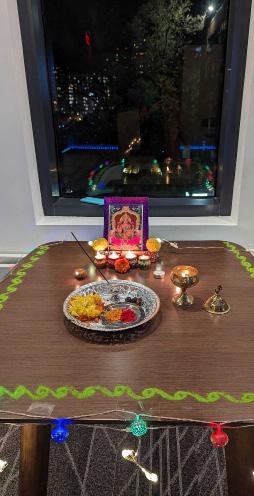
As explained by Delman, with in the Intercultural Space is The Intercultural Space Student Advi sory Committee, which is a group made up of both undergraduate and graduate students at Stevens, who are dedicated to enforcing and representing the goals and ob jectives of the Intercultural Space through educational and social programs. They are led by the In
tercultural Space Coordinators, Cesar Noguera-Saigua and Steph anie Cueva, who receive oversight from the Ofce of Diversity, Equity & Inclusion. This Student Adviso ry Committee ran this event, and while they were able to provide ad vice to students on their tote bags, they also informed students about the cultural importance of Día de los Muertos.
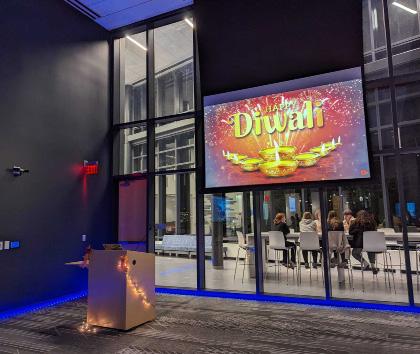
To learn more about the Inter cultural Space, visit the website (www.stevens.edu/intercultural space), Instagram @intercultural space, or email DEI@stevens.edu.
YUVA
CONTINUED FROM PAGE 1
members themselves but they do their best to plan events that do not require funding.
HYaS hopes that in the future they might be able to host a larger celebration for Diwali by working with Graduate Student Life to es tablish a fund through the school. They also hope to work with oth er religious organizations to host an event sharing the importance of Hindu festivals. Overall, HYaS aims to take care of the theological needs of Hindu students.
For their next event, HYaS is bringing a speaker on campus to discuss “Building Mental Resis tance through Yog,” this will take place on November 9. They invite all students of any background to join. Habbu also has a message for the undergraduate Hindu student community, saying “we look for ward to having you join us! I have had wonderful interactions with some of you and I truly appreciate the perspective, knowledge, cre ativity and energy you bring to the table. We would love to have you join us for our future events where we can discuss, debate and enjoy the various facets of the Hindu dharma!”
nesses are required to disclose the minimum and maximum in come that is being ofered for that position. Additionally, it applies to any written job description posted to newspaper classifeds, presented at job fairs, or printed on a fier.
This policy adds New York City to the increasing list of American cities that demand pri vate frms to disclose their sala ries. This practice began during
the COVID-19 pandemic in an efort to better leverage workers during hiring—an already illusive and competitive process for many across the United States.
Salary requirements for job postings were introduced in Col orado earlier this year. California and Washington state will impose the same regulations in 2023.
Another similar law to the one in New York City was passed by the New York State Senate in June, but Governor Kathy Hochul has not yet signed it into law.
Several large companies in the fnancial and technological industries have already updated
their job postings to be in compli ance with the new policy. Some corporations have gone further, such as Citigroup, which added salary information this month to all of its job openings in the Unit ed States, not just those in New York City.
But as with many laws, com panies fnd loopholes. Some employers are listing extreme ly broad pay ranges. However, the argument is that businesses may need to ofer a wide range if they’re open to people of varying experience levels and wish to be competitive in a tight job market.
Some worry that businesses
SDS CONTINUED FROM PAGE
1
way.” The Stute also reached out to Cameron Cliford who played Gerry in the play. He says, “Play On! went as smooth as anyone could hope for. Everyone on the team enjoyed the process as much as the fnal production, and we had an absolute blast sharing it with our audienc es!”
SDS thanks everyone that came to support their fall production this semester and hopes everyone in the audience enjoyed their experience. Keep an eye out for their spring production which typically takes place at the end of March or early April.


NJFROM PAGE 1
economy, one that has sufered due to the pandemic.
One of the biggest issues facing lawmakers trying to pass this bill is deciding which cities and counties are part of Central Jersey. In its current form, the bill denotes Central Jersey as Hunterdon, Somerset, Mercer, and Middlesex counties, leaving room for other regions to be added in the future. These regions would receive increased promotion and economic support from the state which would bolster the tourism industry in their counties.
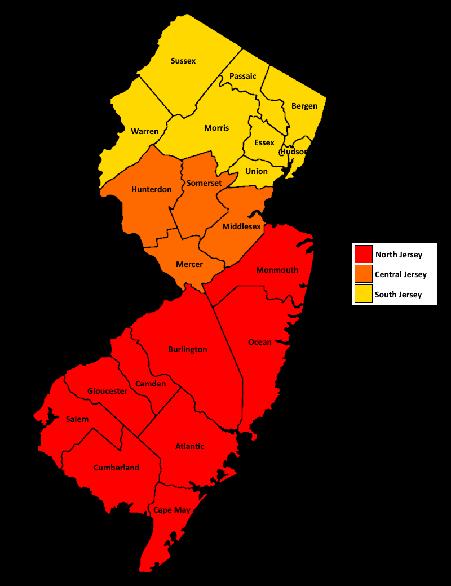
will completely stop posting job openings online and instead rely on alternative methods of hir ing and recruiting. Some busi nesses may decide to remove job listings and invite candidates to send their resumes to a general email address. Or, instead of ad vertising, some people may use employee search frms to identify applicants for them. Employers could also avoid compliance if they hire remote workers but say the job can’t be done from NYC.
However, if a company isn’t complying with the new law, job seekers and workers can fle com plaints or leave an anonymous
FLOOD
CONTINUED FROM PAGE 1
will be underwater by the end of the century, according to a report from the Regional Plan Association. Per these grim predictions, Hoboken is also preparing for combat against a gradual rise against the tides.
In preparation for increased fooding, Hoboken is creating many projects to warn, protect against, and recover from fash fooding and storm surges. One, often overlooked but of vital importance, is the food warning system. This system con tains warning signs and barricades that use a cloud-based system and will activate after a certain amount of fooding build-up (and can be
Jersey.
While the bill does focus on Cen tral Jersey, the main goal legislators are looking to accomplish is to over haul the New Jersey tourism depart ment, a long-neglected division that has not had major changes in decades. In addition to formally recognizing Central Jersey, the bill also changes the way tourism grants are handed out and focuses the tourism strategy of the state on overnight stays from regional visitors.
tip with the city’s Commission on Human Rights. Businesses will have 30 days to fx the violation, otherwise, they could face civil penalties of up to $250,000.
Whatever the worries, most will agree this is a step forward to fair and transparent pay. TaeYoun Park, an associate professor of human resource studies at Cor nell University, said research on salary disclosure laws that have been implemented elsewhere, for example in Denmark, has shown that it helps narrow the pay gap between men and women. Time will tell whether the policy worked as intended.
manually turned on as well). Oth er systems that have been imple mented are resiliency parks. One is at Jackson and Observer Highway, and the other is at 7th & Jackson.
The parks have massive basins un derneath that can hold water during heavy rainfall and fooding.
Hoboken is being sure to invest in the future of food protection. More parks are under construction, along with the development of bet ter technology to predict storms and alert residents of them. In the fu ture, these developments will help Hoboken be better prepared to pre dict and defend against the increase in fooding and storms. More infor mation regarding food warning sys tems can be found on the Hoboken website, hobokennj.gov.
BY QUENTIN JIMENEZThis however has many cities feeling left out, with certain towns in neighboring Monmouth and Ocean counties hoping to use the bill to im prove tourism in their areas as well. Even Governor Murphy, one of the roadblocks in front of the bill, believes that Monmouth, Ocean, and Union counties might all be a part of Central
The bill has been assigned to com mittees in both houses of the New Jersey government. For the bill to pass, it would need to be approved by both committees, then by both hous es of the state government, and then signed by the Governor. The bill has generated a fair amount of positive attention from legislators and constit uents alike, but still has a long way to go before it becomes law. Even if the bill does become law, it seems that the border war over Central Jersey is far from over.
Feature SAFETY FIRST

Signs a drink has been tampered with
BY TANYA AVADIA, STAFF WRITERIn many movies and TV shows, a scary staple involves a character, most of the time, female, at a par ty with a drink. She takes a sip but it feels weird and with every addi tional sip, the world starts spin ning until eventually she blacks out with no remembrance of what happened the day before. While much of television and media, in general, is glorifed, a tampered drink in real life can very well lead to this terrifying outcome. A spiked drink is very much a reality and it can happen to anyone due to a range of motives, such as theft or even sexual assault. Unfortunately, spiked drinks are statistically more likely to happen to women than to men. For these reasons and more, it is important to learn about how to spot a drink that has been tam
pered with and best practices to avoid getting a spiked drink.
Color change
One indicator of if your drink has been altered is its color. Many times, due to a chemical reaction from what was poured into the drink, its color will change. Ro hypnol or other common date rape drugs will turn the drink blue. In any instance, if you notice a color change, pour it out immediately and report the concern to an em ployee so they can make sure this doesn’t happen to anyone else.
Cloudy appearance
Another sign that a drink was tampered with is if it looks cloudy. A cloudy outlook is not normal for any drink.
Excessive bubbling
Excessive bubbling is also a sign to look out for because car bonated drinks only bubble for a certain amount of time, and ex
cessive bubbling means a chemical reaction has taken place.
Odd/Unusual taste
Lastly, if the drink tastes funny, there could be a chance that it was spiked so it is best if you throw it away.

While it is good practice to look for such signs of drink alteration, there are often times when the substance mixed into the drink is tasteless, colorless, and odorless. This might make it hard for peo ple to identify if their drink was really meddled with and might even be drugged as a result. This can really show in a person’s be havior after consuming the altered drink. If a person appears drunker after consuming a normal amount of the drink, that is a sign. Other possible symptoms of drink spik ing include breathing problems, speech slurring, and memory gaps or muscle spasms. In case you suspect you have been a victim of drink spiking, it is best to pour out the drink and report the concern to your friends and the people work ing at the establishment you are at so that they can ensure your safety and the safety of others. It is best to get help as soon as possible be fore the efects of the spiked drink take efect. In more severe cases, do not hesitate to call the police or an ambulance for assistance.
For all the victims of spiked drinks, it is not their fault in any way, shape, or form, However, be ing cautious is always a good prac tice. Steps you can take to ensure your drink isn’t tampered with in clude: buying/pouring your own drinks, watching the bartender who is preparing your drink, buy ing bottles over glasses, not leaving your drink unattended or ordering a new drink if you accidentally do, and not accepting drinks from strangers.
Heart attack warning signs, and what to do
BY LAUREN GARRETT, OPINION EDITORAccording to CDC released sta tistics, the leading cause of death in the United States was heart dis ease, with nearly 700,000 reported heart attack-caused deaths in 2020 alone. When arteries leading to the heart are obstructed by plaque, a buildup of fats, and cholesterol, the arterial blood fow is slowed. This sequence of events is known as ath erosclerotic cardiovascular disease, which afects about 7.2% of Ameri cans. The plaque, as it continues to build upon itself, has a high prob ability to rupture, and break of of the arterial wall, forming a clot, and clogging coronary arteries. When the blood fow to the heart is com pletely blocked, the tissue is unable to get oxygen and begins to die. This is known as a myocardial infarction, or more commonly, a heart attack.

The symptoms associated with a heart attack can range dramati cally from mild and hardly notice able, to severe and fatal. Angina or chest pain that can present as bad indigestion, tightness, pressure, a dull ache, or sharp pain is the most common symptom of a heart at tack. Others include breaking a cold sweat; a stabbing pain in the left arm, then spreading to the shoul der, neck, back, right arm, and at times, the abdomen; fatigue ranging in severity; dizziness and lighthead edness, which may cause one to fall or pass out; shortness of breath; and nausea, which is most common in women. Women’s symptoms are atypical and can be very brief, to the point that a full cardiac arrest is commonly the frst symptom that is recognized as something out of the ordinary.
Now, you may ask “What can I do?” if you observe someone pre senting these symptoms, or if they are unconscious and you believe
they may have sufered a heart at tack. The frst step, whether they are conscious or unconscious, is to immediately call 911, and listen to the instructions given by the oper ator. Only with paramedics on the way can you proceed to the next steps, as emergency care is vital for the patient’s survival and time is of the essence in order to prevent as much damage to the heart as pos sible. If the patient is conscious, the next step is to have them sit down, or remain sitting. Then ask if they take any prescribed medication, such as nitroglycerin. It is neces sary to not leave them alone, give them anything by mouth (other than prescribed medication if ap plicable), or allow them to talk you out of calling 911 by downplaying their symptoms. If the patient is unconcious or falls unconscious be fore the paramedics arrive, imme diately check their breathing and their pulse. If neither is able to be found, this means that the patient has gone into sudden cardiac ar rest as a result of the heart attack.
The heart has stopped, and blood is not being circulated through
out the body, so the brain, nor any other organ or system is being ox ygenated. It is imperative that CPR is performed whilst waiting for the ambulance. If an automated exter nal defbrillator (AED) is available in this situation, follow the instruc tions provided on the machine.
If you observe yourself having symptoms consistent with a heart attack, and you are alone, your best option is to call 911 immediately. The operator will stay on the line with you until the paramedics ar rive, and will instruct you on how to proceed with the situation un til they do. It is possible that the 911 operator may instruct you to chew a full dose of aspirin, a com mon blood thinner, as it gets into the blood system faster than swal lowing the dosage, in order to keep blood from clotting and attempt to reduce damage to the heart. If you have been told by your medical pro vider to never take aspirin, do not take it even in the event of a heart attack, as it may cause more harm to the heart and cause you to go into cardiac arrest.
Know your rights: Good Samaritan laws, self-defense, and carries laws in NJ
BY EVAN PAPAGEORGE, STAFF WRITERPotecting yourself and those around you is crucial: watching for suspicious activity, avoiding potentially dangerous situations, recognizing medical emergencies, and more. However, some in stances occur that require action from bystanders. From someone choking to someone attacking you, it is necessary to know your rights to protect yourself or to help those around you. Legally, these are the system of good samaritan laws, self-defense laws, and laws of self-defense carriers.
One group of laws that allows society to be more prepared to address emergencies are Good Samaritan laws. These laws pro tect ordinary citizens from legal or trials of tout if something goes wrong as they are non-negligibly helping someone in urgent need.

According to the New Jersey Su preme Court, bystanders do not need to help if they see an emer gency. What it does is create the precedence where, if you act out of good faith and try to help some one in need, you will be immune from any legal liability and crimi nal prosecution. In essence, Good Samaritan laws protect those who will help. Many studies show if CPR is needed, the frst minutes make the diference between sur vival and death, often before pro fessionals can arrive, and so by standers who can attempt to help could save a life.
While Good Samaritan laws protect those who help others, there are also laws that protect you when you protect yourself—these
are self-defense laws. Under New Jersey law, any person can avoid prosecution or get a reduced sen tence if they acted out of self-de fense. Self-defense is true if some one is attacking you and you are defending yourself, or if someone is attacking someone else and you protect them (also a case of using Good Samaritan laws). However, there are multiple exclusions and terms to use a self-defense plea. For one, self-defense cannot be claimed if you provoke an attacker with the intent of using force to at tack them back. Additionally, you cannot escalate violence in self-de fense—for example, you cannot claim self-defense by using a knife in a fstfght. Also, you cannot use self-defense if being arrested or confronted by police or law en forcement ofcers unless they are using unnecessary and unlawful force.
An important aspect of self-de fense laws in New Jersey impli cates self-defense carries: devices or substances you carry to use as self-defense. Carries can be pepper spray and mace. Although they are both classifed as a weapon they are exceptions to most weapons rules. For example, you can carry them as long as you are at least 18 years old and have no criminal re cord.
It is of the utmost importance to keep yourself safe and very im portant to keep those around you safe if you can. That being said, it is important to know your rights to defend yourself and help others. For more information, please see the Good Samaritan laws, self-de fense laws, and self-defense devic es and substances in New Jersey.
Basic self-defense for when you’re going out
 BY ADVAIT DANTULURI, STAFF WRITER
BY ADVAIT DANTULURI, STAFF WRITER
College: a place to gather around peers similar to yourself, a place to go out and learn all kinds of new things, and a place to get easily hurt by simply screwing up.
Wait, what?
While college life can be fun, you can easily get in trouble if you’re not careful. While you shouldn’t automatically assume the worst, you shouldn’t assume the best either. Here are some practically perfect tips to avoid any possible problematic precarious predicaments.
Tip #1: Don’t get glued to your devices.
You’re walking around, it’s a nice day, and you’re probably go ing to enjoy it by listening to your
playlist on your phone. You plug in your headphones and enjoy the nice beats. But as you listen to the music, you slowly drift away from your surroundings, away, away.
While it’s nice to look at your device once in a while, it’s best to be aware of your surroundings to reduce the possibility of getting hurt.
Tip #2: Don’t walk alone at night
It’s 8:00 p.m. and your friends just texted you to come to the mall: they’ve got go-karts. So you run out of your dorm, eager to meet them. You run down the empty streets of Hoboken, yet something feels amiss. You stop and listen. You don’t know why, but it feels like someone’s following you.
Try to avoid walking around at night. If you need to get some where, it’s safer to travel with a
buddy to avoid any danger. It’s also good to know the local streets so you’ll have an easier time trav eling.

Tip #3: Utilize locks.
Finally, the last class of the day is done! You slouch on your bed and decide to take a small nap. You set your laptop to charge and doze of to sleep. When you wake up, oh no! The laptop’s gone! But where could it go? Your eyes scurry all over the place until you look at the unlocked door.
Always make sure to keep your dorm room locked to protect you and your valuables. Consider in vesting in a locking cable for your laptop or a safe for your more valu able items.
Tip #4: Don’t forget these things!
It’s best to keep some emer gency cash in case a place you’re going to doesn’t take credit cards, or you’ve lost your debit card. In addition, it’s also a good idea to carry pepper spray, or a whistle, or know basic self-defense to lower your chances of getting hurt. In ad dition, it’s important to keep emer gency contacts and know where the emergency system areas are on campus in any situation. The Stevens Guardian App is a good resource to have as it can directly connect you with the Stevens Po lice Department during an emer gency.
Tip #5: Avoid your chances of losing control in a situation
Whenever you feel like you don’t have control of a situation, it’s best to stop and think about the situation you’re putting yourself in. People can easily take advan tage of you whenever you are not able to think rationally. It’s best to avoid these situations and be safe!
BY TASHA KHOSLA, FEATURES EDITORto dangerous situations. Below is a list of important phone numbers to have to help keep yourself and your friends safe while on—and of—campus.
When it comes to being on-campus, the campus police are available to help protect students. They provide both a general and emergency phone number which can also be found on the back of student Duck Cards.
• Main phone number: 201216-5105
• Emergency phone number: 201-216-3911
The Health and Wellness Cen ter is also an on-campus resource for students to utilize. It provides Student Health Services, Student Counseling and Psychological Ser vices (CAPS), Disability Services, and Wellness Education. A few im portant numbers are:
• 201-216-5678 for scheduling a Covid PCR test
• 201-216-5177 for CAPS. This
bulance
• 2-1-1 is for Community, Hu man Services and Emergency Man agement / Security Assistance. This line can be used for Covid-re lated calls as well for “direct callers to services for, among others, the elderly, the disabled, those who do not speak English, those with a personal crisis, those with limited reading skills, and those who are new to their communities.”
•5-1-1 is for Trafc and Trans portation information
Other important phone num bers to have are those of your friends, roommate(s), residen tial assistants (RAs), and the RA on duty for your dorm building if you are dorming on-campus. Be fore going out, especially at night, make sure that you have someone you can call if you are in trouble. Also, be sure that you have a func tioning, charged phone before you leave and that you have all the nec essary phone numbers on hand in case an emergency arises.
You may have noticed that the campus blue light sys tem is no longer in efect. Have no fear! Stevens has part nered with RAVE Safety to implement a mobile replace ment to the previous system. RAVE Safety, founded in 2004, was designed to safely share critical emergency notifcations and data. Now, you can download the Rave Guardian app in the app store.
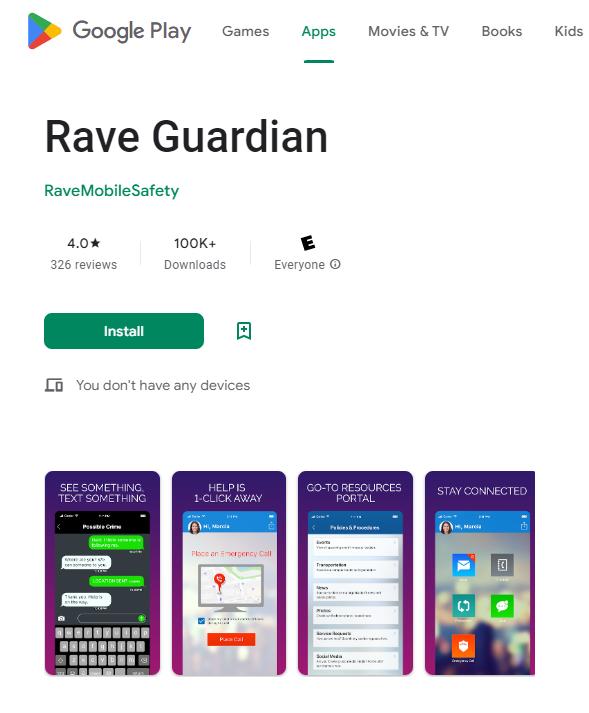
App features include many widgets, most notably a direct line to campus police. Gone are the days of typ ing in 3-911, as emergency services are accessible with the click of a button. Other features include the ability to submit a campus care report, which covers everything from bias incidents to mental health concerns. Addition ally, a catalog of various emergency numbers (including suicide hotlines, the Trevor Project, etc.) are all listed via the call directory, acting as a digital backpack for any health-related needs. The Guardian App boasts a unique safety timer feature; if you believe you will be entering an unsafe situation, this timer can be set to an allotted peri od of time. When you leave the unsafe situation, disable the timer, or you will be prompted to disable the timer. If you do not disable the timer, campus police will pre sume you are stuck in an unsafe situation and track your location.
All staf and students can make a “Detailed Caller Profle.” In this profle, you are prompted to provide information about any medical conditions, your course schedule, and other relevant information. By disclos ing this information on the secure RAVE network, you enable campus police to fnd you more efciently in an emergency situation. Finally, the fastest way to get criti cal campus alerts is to download the Guardian app. No tifcations about campus and surrounding area police activity will be sent directly to your phone.
Your information and location are protected, infor mation about you or your location is only sent to cam pus police when your safety timer expires or you place a panic call to the police. Additionally, guardians who are not campus police (friends, family, etc.) can be linked to your profle. You have the ability to set a safety timer linked only to your non-police guardians, in which case campus police will not be notifed about your location when the timer expires.
Stevens campus police strongly encourage everyone to download the guardian app, especially following the recent string of crimes reported by Campus Police in a recent Stevens announcement. In regards to the recent events during Freshman Orientation, Chief of Police, Timothy Grifn, stated in a mass email that the “situa tion was peacefully resolved,” but he would like to “re mind everyone to take this opportunity and sign-up for the Rave Guardian app which allows members of our community to communicate directly with Campus Po lice during times of emergency.”

Download the Campus Guardian app today to pro mote campus and individual safety!
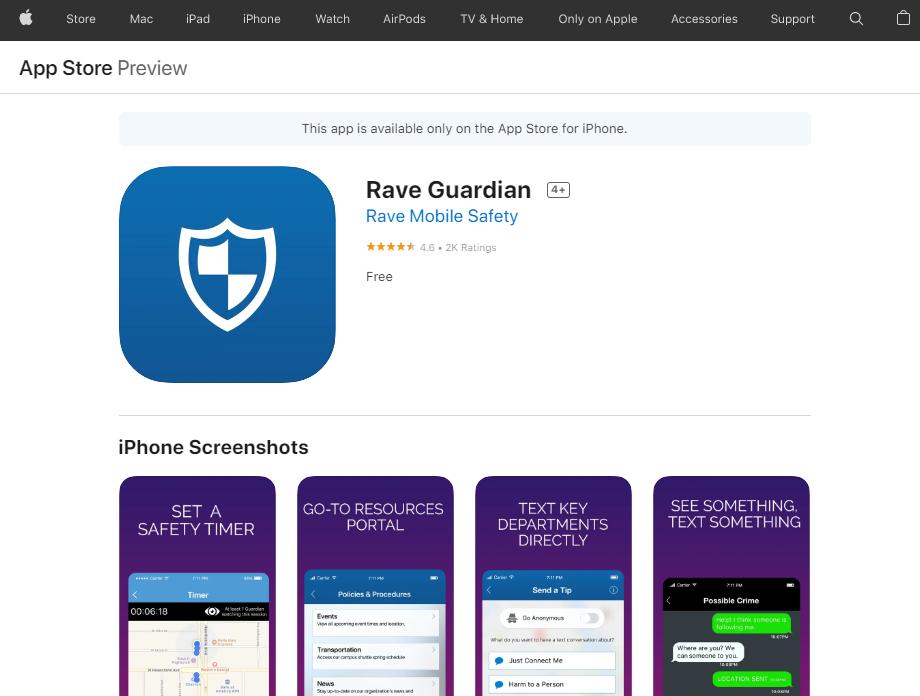
Don’t want to write your essay? You might not have to
BY QUENTIN JIMENEZ, SCIENCE WRITERThe Stevens Honor System may be facing a new challenger to academic integrity in the next few years; essays written almost entirely by algorithms. Recent in novations in artifcial intelligence such as GPT-3 have made AI that is capable of writing language al most entirely indiscernible from that of humans, and with very little input from the user. Rath er than explain its capabilities, I think it might be easier to demon strate what is currently possible with the technology.
Using a free website I found online, I was able to generate en tire paragraphs flled with factual information gathered from the in ternet about another article from this week, “New Bill Hopes to Codify Central Jersey.”
Currently, New Jersey is di vided into two tourism regions: north and south. But many res idents of central Jersey feel like they are forgotten in the state’s marketing eforts.
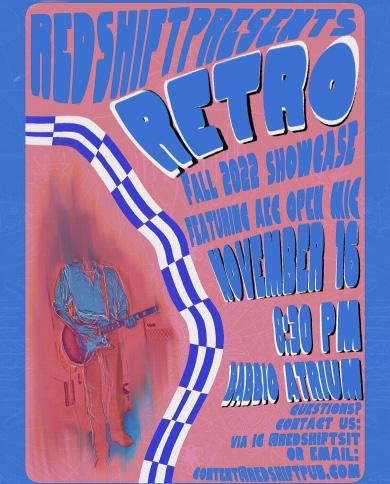
“Central Jersey sometimes gets lost in the shufe between north and south,” Vainieri Huttle said in a statement. “This bill will help ensure that our region is rec ognized as a destination for tour ists and businesses alike.”
“Central Jersey is a beautiful place,” Sen. Raymond Lesniak said. “From Perth Amboy to the Delaware Water Gap, it’s a region with rich history, charming towns and variety of things to do for
family vacations.”
With only a sentence describ ing the main theme of the article, the AI was capable of generating a cohesive paragraph containing fake quotes from real congress men about the subject, almost mirroring the real quotes from the article. Although remarkable, the technology is leaving many educators concerned about how it may impact academic integrity.
The main concern is obvious ly with writing assignments and how machine learning coincides with plagiarism and cheating.
For something like a research pa per, what percentage of it has to be written by the student? If it is 100%, does that exclude other AI writing enhancers like Gram marly? If not, what amount is ac ceptable? Is it okay to enhance a few sentences? A few paragraphs? What about just using it to brain storm and generate an outline?
Questions like these may force educators to stop giving writing assignments, seeing it as an un balanced way to grade their stu dents.
Not only is the question about where the line should be drawn, but if drawing a line is even pos sible. While we can create al gorithms to create content, is it possible to create algorithms ca pable of detecting if something is made by a man or by a machine?
Algorithms like this do exist, but detection always lags behind the creation, and they are nowhere near perfect. While they are capa ble of detecting content entirely
A new treatment for nightmares
BY ERIN MCGEE SCIENCE WRITERMost of us have had bad dreams before. Nightmares, however, can greatly disrupt the quality of sleep we re ceive, particularly when they happen frequently. So far we have yet to develop an expla nation for why we have night mares or dreams, but studies have shown that it is closely related to our memories and our daily lives.
Scientifically, nightmares are defined by intense, neg ative emotions during deep sleep, such as overwhelming fear, aggression, or sadness. When these intense episodes happen several times a week, however, it can be debilitat ing, causing a lack of sleep and affecting one’s day-to-day life. This is known as ND or Nightmare Disorder, a type of sleep disorder in which a person’s rest is frequently dis rupted by nightmares. It’s also more prevalent than you may think as it affects about 4% of adults, according to some studies. ND can commonly occur in association with an other physiological disorder, such as post-traumatic stress disorder, in which the night mares will usually be relat ed to some traumatic event. However, it can also occur irrespective of any events in a person’s life, in which case the nightmares will have a va riety of topics and emotions associated with them. There has been some evidence that this cause of ND is common in people with an increased sympathetic drive.
Currently, the treatment options for frequent night mares have not been effec tive across many different patients. The most common solution is known as image re versal therapy or IRT. It works by having an individual recall a nightmare, and then change the storyline toward a more positive ending. This new story is then rehearsed and repeated throughout the day with the goal of eliminating
the nightmare during sleep. Although IRT is a standard treatment, it fails in nearly a third of all adults with ND.
In a new study by the Uni versity of Geneva, research ers tested new techniques for treating frequent nightmares, to be used in conjunction with IRT. One such method is known as TMR or targeted memory reactivation. In this technique, a person focuses on some idea while a sound plays. Then, during sleep, the same sound will play, trig gering memory storage, and bringing up the same associ ated idea they had during the day.
The researchers tested both of these treatments together, using IRT to rehearse a posi tive nightmare ending during the day, and TMR to associate that rehearsed idea with a pi ano chord. Then, during sleep, the same piano chord would play once every 10 seconds. This allowed the participants of the study to recall the posi tive ending of their nightmare during sleep, by using a sound to trigger memory storage.
For participants of the study using both of these treatments together the av erage number of nightmares per week was significantly lowered, from 3 to 0.2. Image reversal therapy alone still lowered the average number of nightmares but was al most 5 times higher than the combined treatment. The re searchers also note that even after 3 months of treatment, participants still had a sig nificantly decreased number of nightmares.
The results of the study are promising, although the heads of the study admit that there is a long way to go before these methods are more wide ly available and that there is much more work to be done. They also point out that these methods may be very helpful for treating the disorders that accompany frequent night mares, like PTSD, and for in creasing our understanding of the brain overall.
made by a machine with high ac curacy, this signifcantly decreas es as the amount of text written by the machine decreases. This makes it almost impossible to de tect if something is partially writ ten by a machine, making plagia rism a simple task.
This leaves educators ques tioning how to reform their class rooms. Writing assignments in the future may be confned to short responses about concise topics, or teachers may force stu dents to conduct papers in person with a pen and paper. Yet some are opening up to the idea of AI, encouraging students to use it to help boost their writing skills. Some are adding addendums to their assignments, asking stu dents to refect on how the AI changed and improved their re ports.
Walking around campus, I have already seen posters adver tising businesses that ofer es say-writing services. AI writing is already here, and there may be little that can be done to stop students from using it. As the in ternet was being developed, edu cators at the time held very sim ilar concerns, fearful of how the technology may impact learning in the classroom. Eventually, it became integrated into our daily lives and an important piece of how modern education functions. Artifcial intelligence may take a similar path, adding to the ev er-expanding toolbox utilized by students and enhancing the edu cation that they receive.
Sports
Men’s and women’s fencing compete in the Rangers Fall Invitational
 BY RUTHIE MULLISKY, STAFF WRITER
BY RUTHIE MULLISKY, STAFF WRITER
On Sunday, October 30, the men’s and women’s fencing teams traveled to the Simon Forum at Drew University for the frst part of the Rangers Fall Invitational. Both teams proved to be strong contenders for the season, with the men’s team fnishing with an overall 5-1 record and the wom en’s team fnishing with an over all 4-1 record.
To attain such a strong re cord, the men’s team beat Drew University, Vassar College, Army, and Yeshiva University, but lost a hard-fought battle to NJIT. Sophomore Colin Mahoney and senior Dylan Woodward each fnished the day with 13 individ ual wins—a record team-high. Mahoney ended the day with perfect 3-0 performances in two matches against Drew and one against Army. He also won his only match against Yeshiva and Vassar and two matches against NJIT. Woodward ended the day with perfect 3-0 performances against Drew, Vassar, and Yeshi va. He also won matches against Drew and Army. Additionally, sophomore John Morreale had a strong performance, fnishing with nine wins. This event also put graduate student Matthew Jacobson only two wins away from 100 career wins. Looking at the three weapon groups sep arately, the sabre group fnished the day with 43 wins, the epee group fnished with 33 wins, and the foil group fnished with 29
wins.
After such a successful day, Head Coach James Carpenter commented that “It was a really good start to the season for us. I’m really happy with the close wins over Drew and Vassar, and it was great to see Colin real ly step up his game, going 13-2 against a tough feld.”
This invitational marked the collegiate debuts for frst-years James Glover, Nick Reznick, and Aden Vishnevsky.
The women’s team was just as successful. The Ducks beat Clemson University, Wagner Col lege, Drew University, and Army, but lost to NJIT as the men did.
Junior Alana Schmitt and soph omore Arianna Daringa both
ended the day’s competition with 12 individual wins — again, a re cord team-high. Schmitt ended the day with a perfect 3-0 per formance against Clemson and Drew, and Daringa had unblem ished performances in bouts against Clemson, Wagner, Drew, and Army. Both Schmitt and Da ringa ended with an impressive 12-2 record. Additionally, frstyear Emily Zgobmic and senior Claire McNeill had strong perfor mances, fnishing the day with 11 and 10 wins, respectively. Con sidering the three separate weap on groups, the foil group fnished with 33 wins, the sabre group fnished with 30 wins, and the epee group fnished with 21 wins.
Assistant coach Linda Volll
kommer-Lynch added that “To day was a great day for the wom en’s team. We were able to defeat two teams today, Wagner and Drew, that we lost to last week. Overall, it was a great day of fencing with team wins and good individual performances.”
The event marked the colle giate debut for frst-year Nerissa Lundquist.
After such impressive perfor mances, both teams are geared up for a strong season. The teams both returned to the Simon Fo rum on November 6 for the sec ond day of the Rangers Fall Invi tational. The men’s team fnished with a perfect 6-0 record, and the women’s team fnished with a 4-1 record on Sunday.
ON DECK IN SPORTS
FRI, NOV 11
WOMEN’S SWIMMING vs Rowan University Hoboken, NJ 5 p.m.
MEN’S SWIMMING vs Rowan University Hoboken, NJ 5 p.m.
MEN’S BASKETBALL
vs Vassar College Chester, PA 6 p.m.
WRESTLING
vs Ithaca College Jersey City, NJ 7 p.m.
SAT, NOV 12
MEN’S BASKETBALL
vs TBA Chester, PA Time TBA
WRESTLING
RWU Invitational Bristol, RI 10 a.m.
MEN’S CROSS COUNTRY
Metro Region Championship Center Valley, PA 12 p.m.
WOMEN’S CROSS COUNTRY
Metro Region Championship Center Valley, PA 12 p.m.
WOMEN’S BASKETBALL
vs Catholic University York, PA 4 p.m.
SUN, NOV 13
MEN’S FENCING
Men’s Soccer wins back-to-back MAC champions
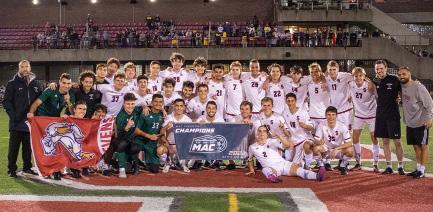 BY KAI WONG, STAFF WRITER
BY KAI WONG, STAFF WRITER
On Saturday, November 5, Stevens Men’s Soccer claimed their second-straight Middle At lantic Conference (MAC) Free dom Championship title in their victory against Lycoming College at home. The teams remained tied after double overtime (OT), but the Ducks fnally defeated the Lycoming Warriors 4-2 during penalty kicks.
In the frst 90 minutes of regu lation, both defenses were strong, making it difcult for both teams to create ofensive opportuni ties. The Ducks and the Warriors each kicked just one shot on goal, but overall, Stevens outshot Ly coming 9-6. Through overtime, Stevens controlled the play, but Lycoming goalkeeper Nick Wilke made two saves, which pushed
the game into penalty kicks. Se nior goalkeeper Justin Cross made saves on the frst and third shots to help secure the win, and senior Gareth Maritz buried the back of the net on the fourth and fnal opportunity for Stevens to secure the MAC Freedom Title.
Sophomores Luca Campbell and Emerico Vespucci and junior Fritz Kabeisman also scored in the shootout. To close out the matchup, senior goalkeeper Jus tin Cross was named the tourna ment’s Most Valuable Player, as he made two saves and earned his 10th solo shutout of the sea son.
The Ducks closed out the reg ular season undefeated with a 15-0-3 record and secured an automatic bid to the Division III NCAA Tournament. Last season, the Ducks went on an incredible run to the second round against
the former reigning NCAA Cham pions Tufts University.
Stevens Men’s Soccer will play at home during the NCAA Tour nament, serving as the site host for the Hoboken Regional for the frst time since 2013. No. 4 Ste vens will host No. 20 Middlebury College, Rowan University, and Worcester State University at the DeBaun Athletic Complex on No
vember 12.
The Ducks look to progress further in the postseason than last year and will be taking on Worcester State in the regional’s opening match on Saturday at 1 p.m. Rowan will take on Mid dlebury at 3:30 p.m. on Saturday as well, and the winners of each match will meet Sunday with kickof scheduled for 3 p.m.
Vassar Invitational Poughkeepsie, NY Time TBD
WOMEN’S FENCING
Vassar Invitational Poughkeepsie, NY Time TBD
WOMEN’S BASKETBALL
vs Moravian University York, PA 2 p.m.
WED, NOV 16
WOMEN’S BASKETBALL
vs The College of New Jersey Hoboken, NJ 6 p.m.
MEN’S BASKETBALL
vs New Jersey City University Jersey City, NJ 7 p.m.
THU, NOV 17
WRESTLING
vs University of Wisconsin –La Crosse La Crosse, WI 8 p.m.
1ST OF 11
AWAY 3RD OF 3
SUN, NOV 6
WOMEN'S SWIMMING
MEN'S SWIMMING
WRESTLING
WOMEN'S FENCING
MEN'S FENCING
MEN'S FENCING
WOMEN'S FENCING
WOMEN'S FENCING
MEN'S FENCING
MEN'S FENCING
MEN'S FENCING
WOMEN'S FENCING
NYU FALL INVITATIONAL–DAY 2
NYU FALL INVITATIONAL–DAY 2
PRINCETON OPEN
UNIVERSITY OF FLORIDA
UNIVERSITY OF FLORIDA
LONG ISLAND UNIVERSITY
LONG ISLAND UNIVERSITY
RUTGERS UNIVERSITY
RUTGERS UNIVERSITY
DREW UNIVERSITY
UNIVERSITY OF PITTSBURGH
UNIVERSITY OF PITTSBURGH
MEN'S FENCING LAFAYETTE COLLEGE
WOMEN'S FENCING LAFAYETTE COLLEGE
AWAY 3RD OF 3
AWAY COMPLETED
AWAY W (22-5)
AWAY W (23-4)
AWAY W (20-7)
AWAY L (9-18)
AWAY W (22-5)
AWAY W (20-7)
AWAY W (15-12)
AWAY W (24-3)
AWAY W (22-5)
AWAY W (20-7)
AWAY W (18-9)
THE STUTE EDITORIAL
Will The Stute ever be a “software” organization?
On Wednesday, November 2, Stevens hosted alumnus Michael Fabiano, Head of the Americas Business at The Associated Press (AP), for a lecture titled “Break ing Barriers: How Innovation Is Changing the News Industry.”
While I wasn’t able to attend the live lecture, I was able to watch a recording of the lecture and want ed to share my thoughts on some of the ideas and sentiments present ed by Fabiano and my main take aways.
Fabiano began his lecture by giv ing a broad overview of what kind of company AP is, more information about its operations, and how the company has grown from its incep tion. One main theme throughout this introduction to the company was the innovation through the in tersection of engineering and jour nalism and how the collaboration of these stark felds allowed the com pany to technologically advance and deliver news to a fast-growing audience. What struck me from this initial presentation were the many similarities between AP and The Stute. Firstly, The Stute was
established only 40 years after AP, subjecting both organizations to growth generated by the advent of quickly developing technology and the “computer age.” Additionally, it seems that both The Stute and AP require engineering disciplines and journalism enthusiasts to function. While these similarities may seem somewhat far-fetched and trivial, it’s interesting to see how a multi million-dollar news company and a university newspaper organization can relate to each other.
Contrastingly (and quite obvi ously), The Stute shares a multi tude of diferences with AP. The most interesting one, in my opin ion, is how each organization views itself. The Stute’s main goal is to report and record Stevens’ histo ry and uplift student opinions. We use technology as an asset to bol ster our presence on campus and on social media while keeping our main focus on the news. On the fip side, as Fabiano states, AP has in creasingly begun to view itself as a software company. This newfound title is appropriate considering how deeply their operations are inte
MIND OF A FRESHMAN Sick away from home
grated into technology from storing content to licensing content to opti mizing the user experience. While AP is a news organization at heart, there’s a lot of focus that goes into the technology side of the company. In fact, most news organizations these days are so deeply rooted in technology innovation that the lines between classifying them as a news company or a tech company become blurred.
As sad as it is to say, the news printing industry is a dying one. I grew up seeing newspapers food ing libraries, schools, shopping centers, ofce buildings, and ev erywhere in between; now all I see are rare sightings of the Wall Street Journal apart from the abundance of Stutes across campus. While the joy of reading news from large broadsheets is incomparable to scrolling through the blue light on a smartphone, even I can admit that digital news is faster and easier to consume.
Currently at The Stute, we deliv er our news every Friday, in print and online. This means that some thing that happens after Wednes
day does not get reported on until the following week’s Friday. With limited resources and staf mem bers, it’s often not possible for us to report on “breaking news” as soon as we’d like.
With the increasing need of de livering news faster, I wonder, will The Stute ever jump on the trend of becoming a software organization? Change is already in store as we are currently looking into engaging a team of student developers to de sign an app, and this will defnite ly be a multi-semester project. An app would allow us to reach wider audiences and deliver quick alerts about breaking news on campus. Could this possibly be the future of The Stute?
I do hope that The Stute nev er stops printing papers. In fact, I keep having this recurring dream of myself walking onto campus 70 years into the future and picking up a copy of a completely redesigned Stute (and might I add, I look pretty good for a 90 year old). But I am cu rious to see how The Stute techno logically advances within the next few decades.
OFF THE PRESS The Squirrels
BY OFF CENTER Sanjana Madhu ‘23 Editor-in-Chief
Sanjana Madhu ‘23 Editor-in-Chief
 BY TANISHKA KAPOOR ‘26
BY TANISHKA KAPOOR ‘26
You wake up one morn ing feeling very nauseous and a weird kind of warm. You feel hot, but you can’t stop shivering. After fresh ening up and washing your face with cold water, you come out of the bathroom exhausted. Feeling of, you check your temperature and groan as you fnd out that you have a 100 degree fever. You collapse on your bed and think to yourself, “Damn this inevitable mo ment is fnally here.” You are sick and you don’t have your parents to take care of you.
Being alone and sick in my dorm wasn’t the best feeling in the world. I was stuck on my bed with the inability to do anything without feeling extreme ly exhausted. I just wanted to sleep all day, but I knew that I should at least eat something. With the change in season, I’m sure a ton of
people are going through sharp pain in their throats, really loud coughs, and un controllable snifing. While this certainly wasn’t the frst time seasonal chang es had gotten me, it was the frst time I was dealing with it without my parents. It’s funny how this was the time when I realized the importance of my parents the most. I missed the care I felt while my mom rubbed Vicks Vaporub (the solution to everything, according to her) on my chest and fore head while telling me to not hesitate to tell her if I need ed anything. Or when my dad would give me warm water while making fun of my cracked voice. I missed the small actions of care. While I still had FaceTime and iMessage to ask them if I ever needed something, it just wasn’t the same.

What was I supposed to do? Actually take care of my self without guidance? I ac tually had to remind myself to eat? Yes. So, that morning I made myself a hot cup of tea. I never could actually drink tea and always won dered how my mom could just sip the boiling drink with ease. But that day, I forced myself to sip the boil ing water so I could get rid of the excruciating pain in my tonsils. After sleeping pretty
much all day, my fever was gone. For some reason, I felt kind of proud that I was able to get rid of my fever with out too much help from my parents. It felt like it was my frst step toward learning to be independent.
Right as I thought I was getting better, I started coughing. I genuinely be lieve that there is nothing more annoying in this world than dry coughs because it does not let you sleep at night. During the day, I thought I was doing fne because I wouldn’t cough that much, but the moment it got dark outside, I would start coughing as if my life depended on it (sorry to my roommate). In those moments, I remember how my mom would mix some ingredients together and make up some home remedy and give it to me in the mid dle of the night to magically cure my cough. I couldn’t do that though, partly because Jonas’ kitchen is always locked. Also partly because I never learned what she actu ally puts in that concoction.
Finally, Friday came around and I was still not getting any better. Deter mined to get rid of my sick ness, I did what any inde pendent student would do. I went home and hoped my parents could cure me.
You’ve seen them, we love them, we’ve seen them, and you love them: the Squirrels of Stevens. But are they doing the best they could? We took a trip to sev eral local universities to see how our squirrel population sizes up against theirs. It may be time to enter a peri od of conquest.
NYU: These guys have some tough squirrels. Born and raised on the rough and tumble roads between Bleecker St and 8th St and digging in the tough dirt of Washington Square Park has given them tough skin. These guys could munch on a rock and not realize it wasn’t an acorn because their teeth are so strong. If they were to invade, our squirrels would be overrun in minutes.
NJIT: Another super squad of strong squirrels. Many of them have looked death (in the form of the light rail) in the eye and laughed in contempt. Then they scurried away to steal someone’s bagel. The squir rels are defnitely ready to tussle at any time, but their teamwork isn’t as strong. If our squirrels cooperate well, they could take them down.
Montclair: Not an in
timidating crew over there. While there, we saw them lose so many acorns that they started re-fnding them and thinking they were all new acorns. The Montclair students throw them a bunch of nuts and acorns so they’ve never re ally learned what it’s like to be hiding in a tree on a rainy day, with barely enough en ergy to go out and scavenge. They’ve never seen an owl swoop down and take their third cousin away to a dis tant nest. They are a prime target for our squirrels to invade.
Columbia: Central Park has spoiled these squir rels. There’s too much open space and too many trees for them to get a hard edge. Even though they’re in a city, if the NYU squir rels came for them, they wouldn’t stand a chance. They would probably bury some acorns and then hide in spots that aren’t actu ally that hard to fnd. This is another prime target for invasion, with a signifcant bonus of establishing a foothold in Manhattan for future operations.
So what do we need to do? First, our squirrels must not be allowed to get complacent. If you throw them food, make them earn it. Put it high in a tree, or
bury it under some dirt. Make them run past you to get to it. Show them pic tures of squirrels from oth er schools and build a fght ing, competitive spirit.
Next, our squirrels need to train. Get them in groups of 100 and start doing drills. Get them into formations, and turn the formations left and right. Form a phalanx like they did in the good old days of the 1200s. Get them chainmail gauntlets, coifs to protect their furry little heads and necks, and spears to thrust into their enemies. Teach them to hold a shield for themselves, and instill a sense of camarade rie so deep they would sac rifce themselves for their neighbor. Teach them to fght to the last man, when a hawk swoops down on one squirrel, ten more should be leaping on it attempting to bring it back down.
Our squirrels have the ability to take on any school, and it’s high time they did so. There’s no reason not to enforce our rodent su periority on our academic counterparts. We need to expand our horizons, bring our squirrels into the new age. They will be the loyal soldiers of destiny, fghting for acorn and nut domi nance. Welcome to the new age of squirrels.
BY TREVOR DAMEIKA ‘22It’s weird. Isn’t it? We are more than halfway through the 2022 Fall semester and it’s nearing Thanksgiving. Yes, I understand there are a plethora of projects and exams still to come for many of us; however, we are getting closer to another semester in the books (for frst-years, one
down, seven to go). As we inch closer to Thanksgiv ing, let’s take a look at a few Stevens items we should be thankful for.
First, the University Center Complex (UCC) is a mixture of both. It has been great to have a senior year where I can have (although pretty minimal) a year with such a nice-looking, cozy hub for student enter tainment and food. On the other hand, it has gotten its fair share of bad rep for its elevator mishaps, long food wait times, and low access for non-residents.
There are multiple good things about the UCC in cluding that campus resi dents/students can gather for decent meals and also study/socialize in comfort able rooms across the en
tire towers. The amount of food options in the towers creates a nice blend that Stevens has never expe rienced before. These in clude Halal station (chick en shawarma, etc.), Italian station (pizza and pasta, etc.), and a sweets station (cookies and cannolis, etc.).
I’ve tried all of these plac es. I would say it provides decent quality for those on campus even though there are frequent hiccups. Fur thermore, there are plenty of relatively confdential study areas for students, and although they may be pretty niche, the amount of public gaming, like pingpong and a pool table, is more than we had before.
These areas provide satis fying locations for students to enjoy each other’s com
pany.
On the other hand, there are many reported negative spots in the UCC for stu dents to highlight issues. Early on this semester, the invasion of lantern fies was so prevalent that it was nauseating even traveling inside the towers. Addition ally, the elevators provided an uncomfortable move-in for many students and still create many issues. Resi dents still have to wait long intervals for the elevator to take students up to their respective rooms. Another issue that presents itself is the admission of guests to the towers. Currently, only two guests are allowed for residents of the towers to bring past the common ar eas. This makes studying difcult for large groups of
students and it forces peo ple to bring non-residents to other areas around cam pus.
Second, Stevens is con tinuing to return to nor malcy. Since early 2020, regulations have been relaxed and classes are returning to in-person without issue. For exam ple, throughout the 2021 Fall semester, rain storms caused the immediate mid day move of classes from in-person to online fairly frequently. Presently, a tor rential rainstorm does not stop in-person classes from happening. You can have your opinion either way if it is a good or bad thing, but we are experiencing a true, complete in-person semes ter (depending on profes sor preference of course).
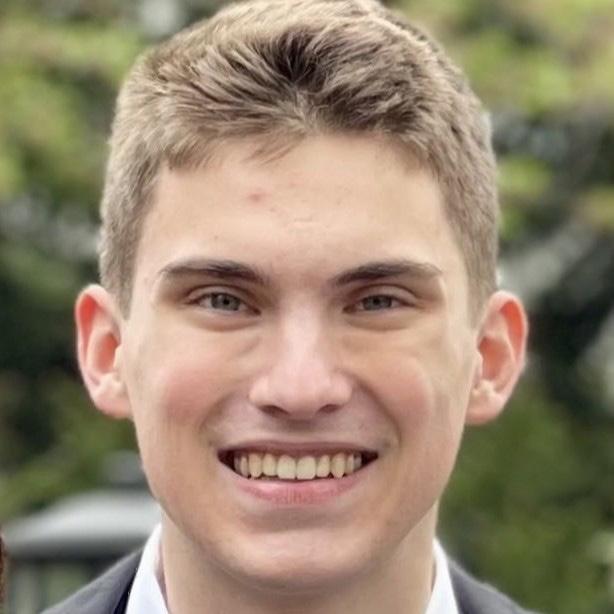
Also, clubs are able to meet with much more frequency in-person and have large attendance numbers.
Third, admission rates at Stevens are increasing. More than ever at Stevens, a broad, diverse group of students is being admit ted. In my opinion, this is a great sign for the future of the institute as they con tinue to move on from the past. For frst-year and sec ond-year students, this is something to look forward to as you become campus leaders.
All three of these Ste vens circumstances provide areas for improvement, but also, a bright future for the university. It’ll be interest ing to see the UCC evolve and the campus becomes stronger one step at a time.
What are we thankful for?
SUSTAINABILITY Don’t be too hard on yourself
nothing and therefore did not need to think about making sustainable choic es.
 BY KATIE BLOOMER
BY KATIE BLOOMER
A few months ago, I was at the peak of my sus tainability journey. It’s not that I have stopped caring about the environment, but I realized that instant ly eliminating all plastic from my life is depriving myself of too many things at once. I preach that a low waste lifestyle should be gradual, one swap at a time, and only after exten sive research, but I wasn’t following that advice.
When I was home this summer, it was easy to avoid directly purchas ing disposable or plastic packaged food items. In my hometown, there are no boba and coffee shops within walking distance the same way they are present everywhere in Hoboken, so my friends and I are not in the habit of getting food or drinks out. My parents did the grocery shopping, so I ex cused any plastic used for my food because it wasn’t in my control. I also gave up going to the mall for fun a long time ago and don’t really have the desire to purchase new clothing or items. This meant that I was purchasing practically
Everything changed when I came to college. Suddenly I was cooking every meal myself which required grocery shop ping at one of two stores within walking distance. Unfortunately, neither of the stores has zero or even low waste options, so the majority of my groceries include massive amounts of plastic packaging. It is hard enough trying to cook consistently for the first time, but being a veg etarian is an added strug gle. My required Stevens meal plan is also an option when it is time to eat, but it isn’t any better since al most everything from the UCC comes in a single use container. Additionally, I now have the temptation of coffee and boba shops, cute bakeries, and various places to eat on Washing ton Street. Some of these can be moderately low waste, but many are not. In fact, boba is probably one of the most wasteful options with its plastic cup, plastic sealed top, and big plastic straw, but it is so delicious and the favor ite treat of many students.
During the first few weeks of school, I felt in credibly guilty when I would see how much was being thrown into my trash can. It felt like I was a fraud, especially com pared to how little waste I created over the summer. After taking some time to reflect, I realized that I




was still actively trying to reduce my waste which is more than many people at tempt.
So, what do I do now?
I am still trying to figure out ways to reduce my waste while grocery shop ping. This goes hand in hand with eating more un processed foods like loose fruits and vegetables. I also try to limit purchases of coffee, boba, and other things that come in dis posable packaging.
I have stuck with many sustainable swaps for personal care items like shampoo/conditioner bars and a bamboo toothbrush because these items are easy to buy once and not repurchase for months.
I rely heavily on online shops for these purchases. I recommend checking out https://zerowastestore. com/ and https://www. theplasticfree-store.com/. When purchasing sustain able products online, buy in bulk to reduce the neg ative impacts of shipping and packaging materials.


Whether you are new to sustainability or have been actively reducing your waste for years, don’t be too hard on yourself. We are all imperfect hu mans in a society that is not set up to be zero waste. Even making small chang es can be challenging and depriving yourself of any plastic-filled items will just result in burnout. Fo cus on the positive and see the amount of waste you are reducing with your ac tions.
FOR MATH’S SAKE
The Ising model: from electrons to elections

ner in their specific or bital. Thus, they are more inclined to interact with the unpaired electrons of neighboring atoms.
 BY CHARLES BEALL ‘22
BY CHARLES BEALL ‘22
With the 2022 mid terms being held on Tues day, I wanted to write an article connecting math ematics to election mod eling. What first came to mind was the statistics of polls and how predictions on election outcomes are made prior to the actu al counting of the votes. There are a lot of interest ing subtopics such as sam pling error and bias, but my guess is that a lot of you have an intuitive sense for these things.
Thus, I’m going to dive a little deeper and dis cuss a model that first appeared in statistical physics of all places, and is recently being applied to mathematical studies of elections. This model is named after 20th-century German-American physi cist Ernst Ising, who was interested in studying the properties of pure mag nets like iron.

The electrons that make up iron atoms play a huge part in making this mate rial a pure magnet. Iron atoms have many unpaired electrons in their outer most shell—this means that many of these valence electrons don’t have a part
A fascinating property of electrons is that they act like very tiny bar mag nets, having a north and south magnetic pole; the alignment of these poles is what determines an elec tron’s “spin ,” a property of quantum particles you may have heard about. Be cause of the strong affinity for their unpaired neigh bors, the magnetic poles of the electrons will align with each other in iron, i.e., they’ll all point in the same direction. This caus es a bar of iron to act as one big magnet!
Back to Ising, his model described how the iron at oms align with each other at various temperatures. This was a statistical mod el, with the alignment or spin of each atom having a probability of being “up” or “down.” For iron or oth er “ferromagnets” (materi als that naturally become magnets), neighboring at oms are much more likely to have the same spin. Far away atoms, however, will not interact with each oth er at all.
Perhaps this may spark a connection with voting to you. While this is not always the case, it is com mon for people who live in the same area, or who are close friends, to share political beliefs and opin ions. On the other hand, we see that different parts of the country can have vastly opposing political views.

Thus, in a two-party system, the Ising model can be used as a basis for simulating elections! One needs to introduce a bit more structure to it first, however. To simulate elec tions at multiple levels, one needs to break up the voters into groups (this is similar to how voters are placed in districts for our representative democra cy). Each district will have its own voting tendencies, so a new probability of vot ing one way vs. the other must be assigned to each district.
It is also important to assign the correct stan dard deviation to these models. Thus, the elec tion Ising model must be matched with empirical data on elections, which typically show a deviation that decays rather slowly compared to a truly ran dom model. Lastly, the structure of the election plays a huge role—-there may be multiple stages of voting, like in the Elector al College.
These models have mainly been used to study the probability of “deci sive” votes in close elec tions, that is, which areas or voters turn a split vote into a slim majority. I think that this model also may help polling efforts in the lead-up to an elec tion, since, in recent years, polls have not done a great job at predicting election outcomes. But for now, it is truly exciting that a model which started as describ ing electrons can now be applied on a much broader scale in elections.
Opinion
MUSIC
Example title
West. These are the most recent instances of West’s absurd, infammatory, and ofensive behavior.
West has been criticized his entire career, with his defenders willing to sepa rate his actions from his art.
havior refect on the moral ity of the individual? What even counts as supporting an artist?
BY KAYDEN CANNILLA ‘24On October 3, 2022, Kanye West wore a “White Lives Matter” shirt to his Paris Fashion Week event, a phrase that the Anti-Def amation League categorizes as a hate statement. On Oc tober 9, he was restricted from Instagram and Twitter for threatening Jewish peo ple with “death con 3 [sic],” while at the same time in sisting he “can’t be Anti-Se mitic” because of his own minority status. On October 16, he bragged “I can say an tisemitic shit, and Adidas can’t drop me” on a podcast appearance, and on October 25, Adidas, among other brands, released a state ment formally terminat ing their partnership with
SPOILER ALERT
In February 2016, Univer sity of Richmond Professor Erik Nielson was quoted in USA Today as saying “[West] is talented enough that he has made the calcu lation that you can dislike him and you will still listen to his music.” This had been the dominant view, but after years of repeated bigoted statements, his defenders seem to be dwindling. Ye, which is Kanye West’s cho sen name, is far from the only artist to be criticized or “canceled” for their of fensive remarks or actions. Just because we like the art that a certain artist creates doesn’t mean they owe it to us to be a good person. So where does that leave us as consumers of a prod uct made by someone that we disagree with? To what extent does supporting the work of someone with con sistent, reprehensible be

Death of the Author is a literary theory that regards the text as independent from the author; in other words, the author’s intent is irrelevant to the mean ing that an individual has derived from it. Author and video essayist, Lindsay El lis, takes issue with individ uals who apply this theory “to excuse yourself from po tential guilt,” and elaborates “you don’t want to examine what that author does with their platform.” In the case of Ye, his enormous plat form of mostly young peo ple are more likely to be infuenced by bigoted rheto ric. As evidenced by the va riety of brands terminating contracts with Ye, it seems like most people agree that an artist is not entitled to their platform if the public disagrees with them. Giv ing fnancial support to an artist through direct means like buying merchandise, attending concerts, and amplifying their voices on social media are also some
what taboo. But the problem of their work still remains; should an individual de prive themselves of art they enjoy?
Becca Rothfeld writes about misogynistic philos ophers and whether or not their ideas are tainted by their bigotry, and poses the idea that removing their work from our lives is not necessarily the answer. The individual’s responsibility in consuming the works of bigoted artists is complicat ed from multiple perspec tives. Supporting the artist is to condone the actions, and to ignore their wrong doings is to accept them. Making the artist’s work in accessible seems a step too far though, as Rothfeld puts it “both because we have an obligation to familiarize ourselves with our check ered history” and because minority communities are often demonized so their censorship becomes justi fed. That isn’t to say that Ye gets a free pass because of his minority status, more so that his work is mean ingful because of his per spective as a minority, and


eliminating that perspec tive sets a dangerous prec edent. Rothfeld then refers to the German philosopher Heidegger, existentialist and member of the Nazi Party, saying “Heidegger would have disdained me, a Jewish woman […] I am still violently moved by his writ ings […] It wounds me that their author displayed such callousness. But should I wound myself further by denying myself something I love?”
I don’t have an answer to this question, but I have a few quick last thoughts. To many, knowing the distaste ful words and actions of an artist makes their music less enjoyable. Given aux, I wouldn’t play music of con troversial or “canceled” art ists. If I already bought the album, the artist already has my money, whether or not I continue to listen to it. Spotify pays artists less than half a cent per stream, so if you stream a few songs, it’s not signifcant fnancial support. I’m not the arbiter of justice, so separate art from the artist as long as you can live with yourself.
An underappreciated classic: Friday the 13th
BY JULIA WIERZBICKI ‘23Yes, I know Halloween was two weeks ago. But I’m still not over fall and I’m getting stressed by all the stores already playing Christmas music. So you’re getting another spooky movie review this week.
I’ve seen Friday the 13th at least three or four times. Most people think of it as a silly slasher, su per dated without really having much substance. But honestly, on my last
viewing of it, I came to ap preciate it a lot more. It’s a classic scary story about teenagers getting trapped in a campground with a deranged serial killer af ter them. While that seems pretty mundane for mov ies nowadays, the concept was quite new at the time. And even though some of the efects may be dated, there are quite a few good scenes that still hold up today. One of the kills, for example, has a knife pierc ing through a guy’s throat from beneath the bed. His head is clearly real, and I honestly couldn’t fgure out how they got that shot to work. There were also some great POV shots that real ly added to the tension and suspense.
The other great thing about the original Friday the 13th is the twist villain at the end. Even though it’s
been out for decades, if you ask people who the killer of the movie is, 90% of people will say Jason. But in fact, the killer in the original Friday the 13th is actually his mother, Mrs. Vorhees. The frst time I watched the movie I was totally shocked and didn’t expect it at all. I feel like it’s almost better that the franchise has such a famous killer because it makes the twist villain a real twist for frst-time viewers who are familiar with the franchise but nev er saw the original. Fun fact: although Jason is best known for his hockey mask, he doesn’t actually frst put it on until Friday the 13th: Part III. In Part II, he’s just wearing a canvas bag on his head. I promise I’m not joking, you can look it up!

What’s also interesting is the fact that the flm was flmed in Camp No-Be-Bo-
Sco in Hardwick, NJ! Every time a Friday the thirteenth rolls around, they have a huge festival where people can go and take pictures with Jason and explore the campgrounds. They’ll even put together haunted hous es and viewings of the flm for the event. It’s so cool that we have a piece of hor ror history so close to us. I’d love the opportunity to visit the county for a Friday the thirteenth one day.
Overall, while it’s not the most deep and thought-provoking horror movie out there, it’s def nitely a bit overlooked. It’s a fun watch with some great tension and some re ally creative efects for the time. If you’ve never seen the flm before, defnitely check it out. And maybe I’ll see you at Camp No-Be-BoSco soon to visit the origin of Jason!
Jake falls in love with Sa die, a beautiful high school librarian. And, as the om inous date of 11/22/63 ap proaches, he encounters a troubled loner named Lee Harvey Oswald.
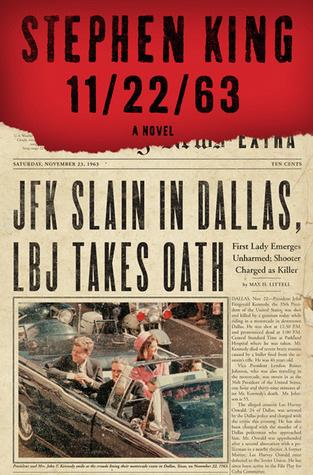
On November 22, 1963, three shots rang out in Dallas, President Ken nedy died, and the world changed. Unless: in 2011, Jake Epping, an English teacher from Lisbon Falls, Maine, sets out on an in sane—and insanely possi ble—mission to prevent the Kennedy assassination. Leaving behind a world of computers and mobile phones, he goes back to a time of big American cars and diners, of Lindy Hop ping, the sound of Elvis, and the taste of root beer. In this haunting world,
The intertwined themes in this novel are really interesting because time travel can be viewed as a philosophical and ethi cal topic. Because of the timing of the time travel in this novel, Jake had to stay in the past for a long time, long enough that he started to build a life. This presented him with a bit of a problem, as he couldn’t tell anyone who he actually was, why he was there, and how he got there. He had to keep so many secrets; they overtook his life and ruined a lot of his relation ships with other people he’d met. Obviously, we don’t encounter time trav el in our daily lives, but it’s still a very powerful lesson to learn. Keeping secrets from your closest friends,
family, or partners will al ways end badly.
Another philosophical and ethical aspect of time travel is how morally gray it can be. In this novel, Jake goes back to stop the Kennedy assassination. But how many bad things can you actually stop? How is it fair to only stop one or two people from dying and why those two people? What makes their lives more valuable than others? And so the list of questions goes on and there is no answer really, but it is definitely an inter esting thing to discuss.
Additionally, I enjoyed the perspective on time travel that is presented in this novel. A common oc currence is that the past doesn’t want to be changed. I feel that in a lot of movies and TV shows where time travel occurs, it’s relatively easy to change the past but there will be consequenc es due to the butterfly ef fect; however, in 11/63/22,
the universe does a lot to prevent someone from changing the past. It was still possible, but a lot hap pened to avoid it which is a refreshing view of how time travel could possibly work. Stemming from this, the use of the butterfly ef fect was also cool. In gen eral, I just think the con cept of the butterfly effect is so interesting.
This novel was very, very good. It’s quite long at 850 pages, but definite ly worth it. It is clear how much research went into the time period because of all the detail and musical references; these are per sonally my favorite parts because I love 50s and 60s music, and I just find all the historical events that happened between 1940 and 1970 interest ing. Knowing that Stephen King is the author of this novel speaks for itself, but this book was so intriguing and truly a masterpiece.
Q: When should I start applying to summer internships?


 BY CLAIRE HANNAN ‘24
BY CLAIRE HANNAN ‘24
Right now! While it seems ridiculous to start applying for a job half a year before you start work ing, now is actually the best time to fnd a job. If you ask around, you might be sur prised to fnd that a lot of people, especially juniors, already know where they’re

working or have gotten of fers for this summer. Start by going on Handshake, which you can fnd on the MyStevens page, and search through jobs until you fnd something inter esting. Apply to any jobs you would consider work ing for no matter how un qualifed you are; you never know what will work out. I would recommend applying to as many jobs as you can, but also make sure you’re putting efort into each ap plication (don’t skip out on optional cover letters!). But let’s be real, you need more than an online application to get noticed by compa nies. One thing that can really help is networking.
Reach out to your parents, neighbors, aunts, and un cles and see if they or any of their friends work in the feld you want to go in. Hav ing a reference can massive ly improve your chances of getting an initial interview. You could also attend com pany information sessions that the career center hosts, after the sessions be sure to go up and talk to peo ple from the company. I’ve already gotten a few inter views by talking to workers and connecting with them on LinkedIn. Overall, the best way to get a job is to do the absolute most that you can, make yourself visible to employers, and put your self out there.
BY ETHAN KLESCHINSKY ‘24The best time to apply to summer internships was probably about a month ago. With everything super hectic in the semester, it is reasonable as to why you have been lackluster in your eforts to apply to positions. Unfortunately, if you are not
currently going through the process of interviews and receiving ofers, the chanc es are looking bleaker and bleaker every single day. I have been thinking of dif ferent ways to make yourself stand out amongst other ap plicants and I am going to share some good ideas with you. The frst idea I had was begging, by either writing a long sob story to a recruiter or recording a video of your self on your hands and knees begging for a job, profusely asking for a position is one way to make sure a recruit er remembers you for better or worse. Another idea I had was to lie on your resume to make yourself look like a better ft candidate. I would
THE DOODLING DUCK 10 Things I hate about the MoMA
question means. In this way, art can be defned and rede fned until fnally art becomes a word that encompasses any and all actions associated with human expression, in cluding taking a picture at the MoMA and sharing it on your story.
BY POOJA RAJADURAI ‘23Yes, this is meant to mim ic the notorious dialogue from the movie, Ten Things I Hate About You, a perfect example of the cultural nos talgic zeitgeist that longs for 90s romantic comedies (mi nus the DVDs and cis-white cast). I’ll try to explain as I go so that you’re incentivized to visit this beautiful institution.
I hate the way you make me question capi talism. And the way you don’t defne art even a little.
Through a variety of in teractive art pieces, the frst foor of the museum asks you to question your sense of identity and your consump tion of media. It asks you to reckon with your screen time and your self-indulgence, be that in your prehistoric need to own art, or more recently, repost art. The context with which you share, display and own art adds another di mension to what the “art” in
I hate the way you display random things, I hate it when there’s no beginning, end, or mid dle.
I disagree with the senti ment that art that doesn’t im mediately look recognizable or familiar is meaningless. I also disagree with the sen timent that art has to have a decided meaning or plot. People like to make beautiful things, but they also like to use the tools and materials around them to create things that represent ideas they care about, yes, but also just things that they like. So while that big balloony display of plastic sheets might look to you like trash bags, it might also sig nify levity and whimsicality to a person who just wanted to create and let live.
I hate your big dumb Anatomy of AI exhibition and the way you confuse my mind.
The Anatomy of AI exhi bition shows every part of the process of the implementa tion of AI in day-to-day life. From the mining of materials, and the energy spent in data
processing, to the pay gap be tween the CEO of companies that further machine learning and software developers and Indian miners of necessary metals, the exhibition makes you question your grasp on human evolution. Especially in terms of who was allowed digital evolution and who wasn’t. Art is also just confus ing. That part is straightfor ward enough.
I hate you so much, it makes me sick, it even makes me rhyme (This part I copied right out of the movie for continuity’s sake.)
I hate the way you piece difcult words to gether (really what is “Crit ical Fabulation”), I hate it when you make me think.
Every movement, every idea, every creation is either replicated or used as inspira tion, which means that a lot of the time, similar enough types of art will have their own name. While sometimes the names are a mouthful, it certainly makes styles and artists easier to look up on Google. It also makes it easier to tie emergent art styles with the periods they come from, ultimately providing insight into the political, economic, and social characteristics of a time that produced some type of art. It also links dif ferent time periods together through the repurposing of certain style elements. Art is
never lie on my resume, but you should totally give it a try. By being untruth ful about your experiences and academics the artif cial intelligence that reads your resume is more likely to fag you as someone with the qualities of a star intern. But after lying and begging you need to brief yourself on how to handle your frst stage of interviews when my great advice inevitably lands you a couple. During your interviews, I would recom mend keeping up the facade and continuing to pretend to be someone more quali fed than your current self, because being yourself isn’t good enough for these posi tions. Happy hunting!
political because it says some thing. Sometimes it takes as much listening as seeing to understand.
I hate it when you dis play important pieces. Even worse when the col ors make it hard to blink.
I had no idea the MoMA displayed pieces by Frida Kahlo, Salvador Dali, Vincent Van Gogh, Picasso, and Geor gia O’Keefe. Did you? Also, anyone who can blink in front of a Henri Matisse painting or a Kandinsky is superhuman to me.
I hate it when you pro vide vital context to com plex pieces. And the fact that there’s not a single empty wall.
If you want to go through the entire museum in one day, which I suggest doing only if you visit with our Ed itor-in-Chief, Sanjana, as I did, you will spend exorbi tant amounts of time reading the blurbs next to the paint ings. So I don’t suggest you try to see everything at once (again, unless you’re with our sprightly, energetic, and de termined EIC). And yea, the whole museum is flled and there are lots of walls. You might get a tad tired.
But mostly I hate the way I don’t hate you, Not even close, Not even a lit tle bit, Not even at all. This is also copied out of the movie but meant wholeheartedly.
ROVING REPORTER


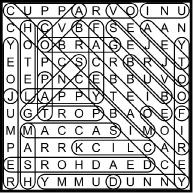
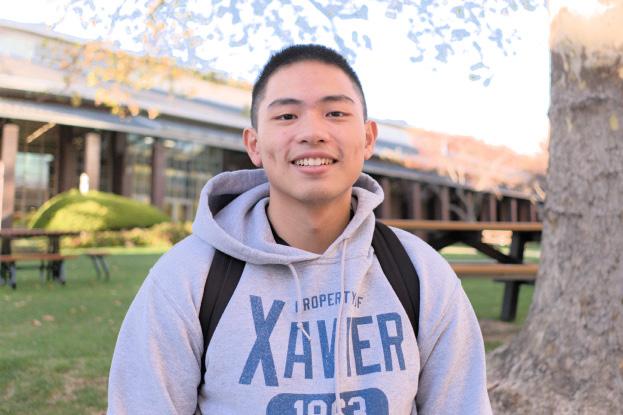


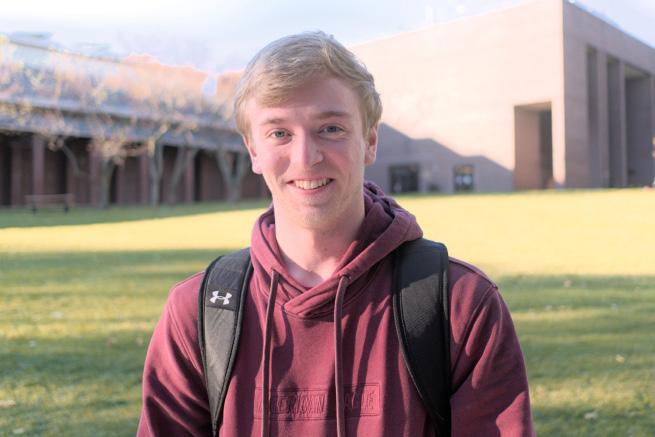



 By Rafael Lee Li
By Rafael Lee Li
“When is it time to bring out the winter coat?”
